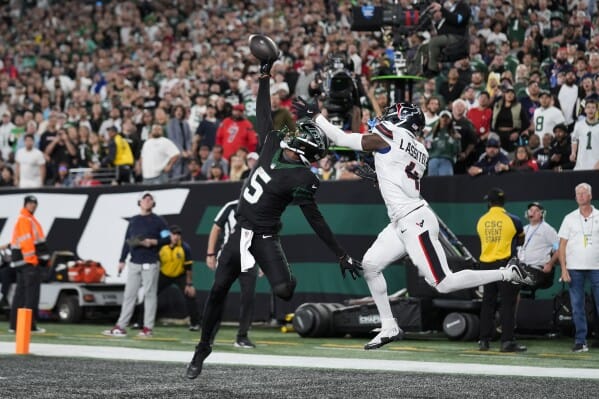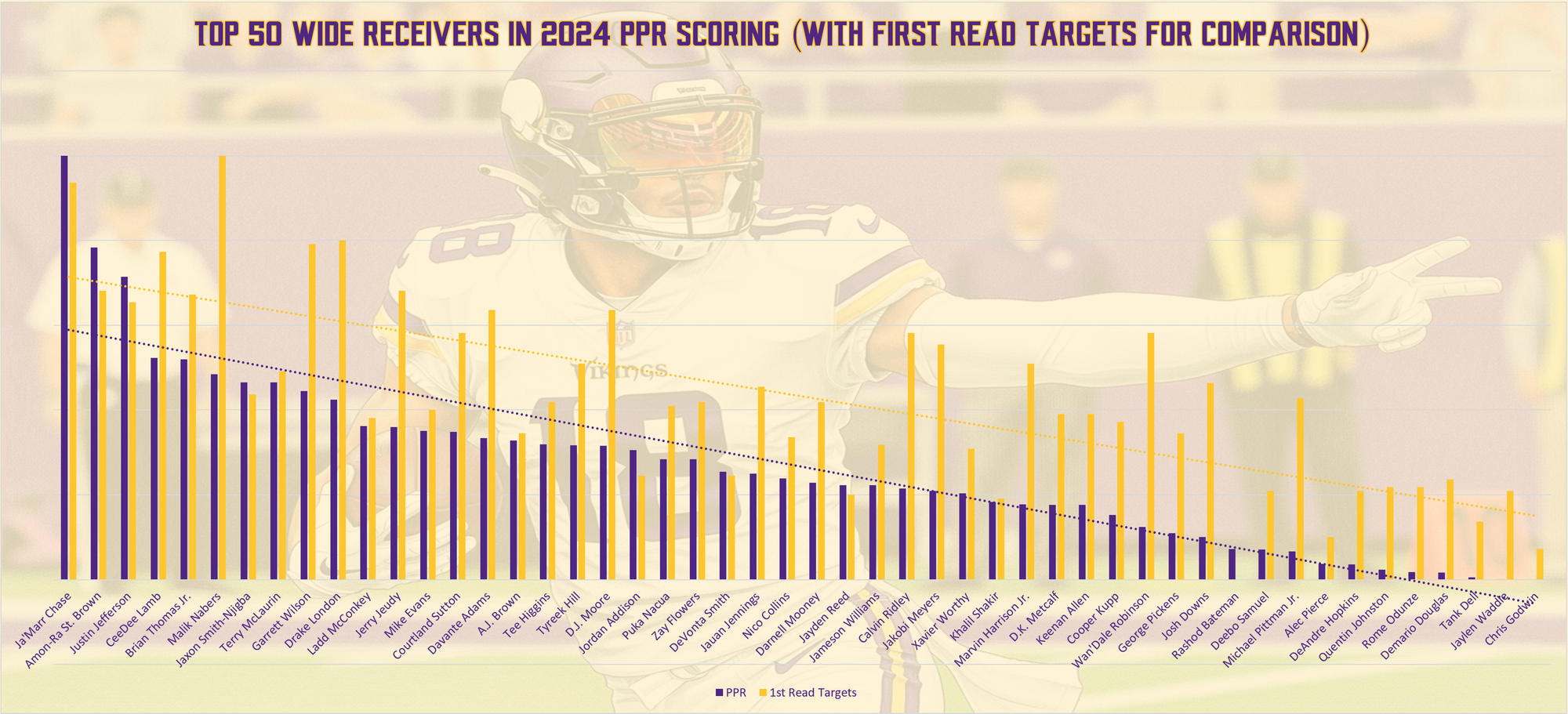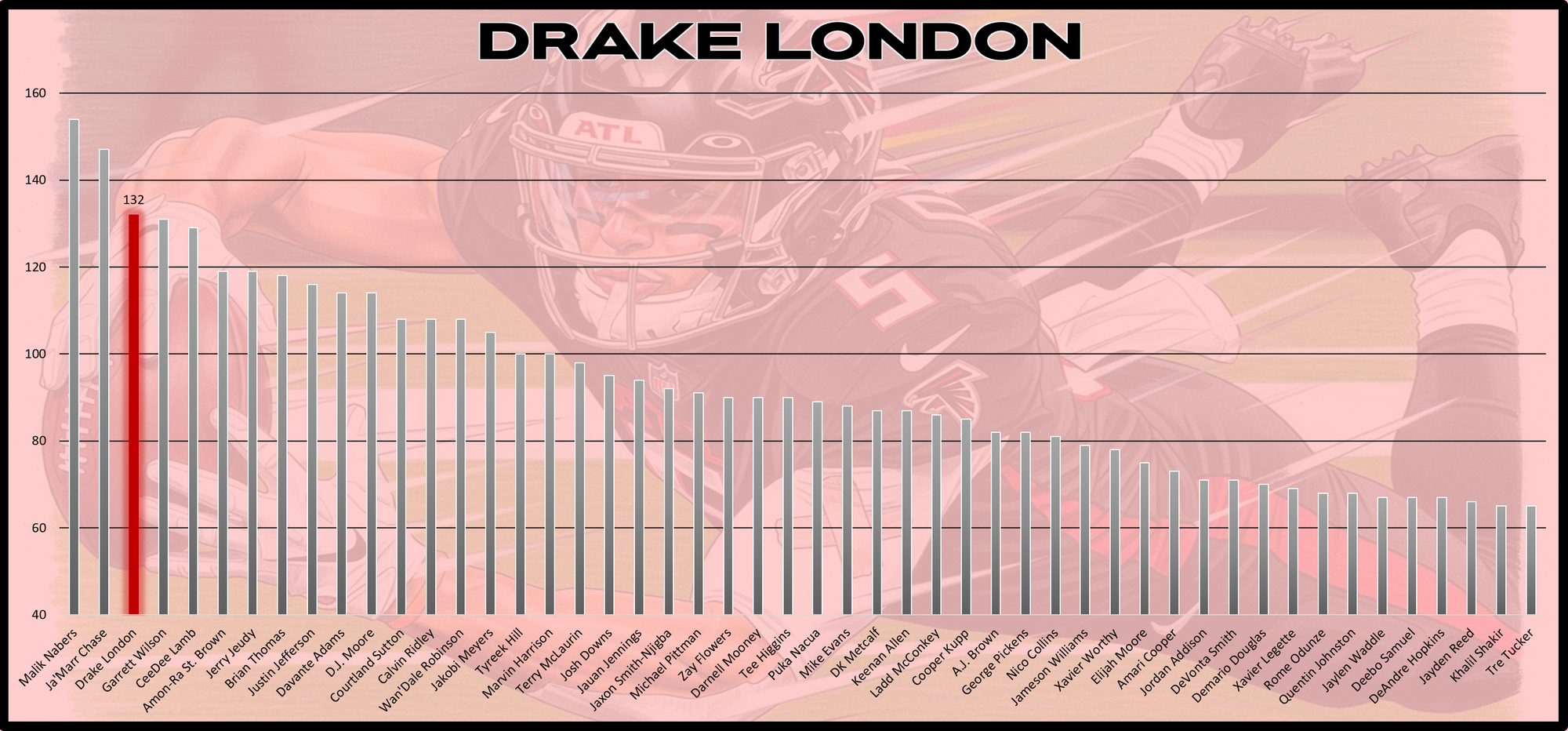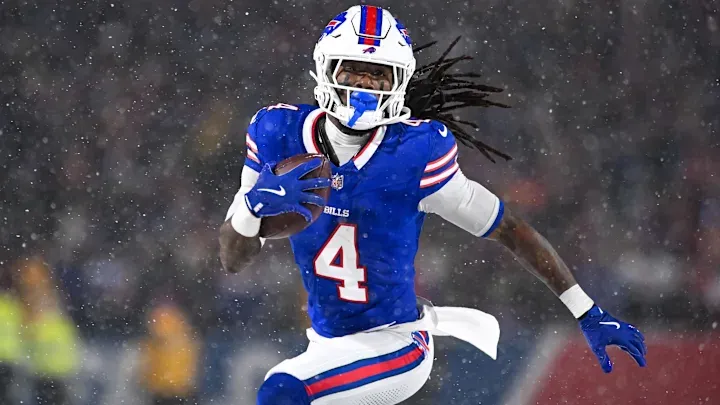
Overlooked Stats: Being Prioritized in an Offense, as It Turns Out, May Be Meaningful
In fantasy football, gaining an edge means going beyond rankings and uncovering predictive stats that go overlooked. Legacy stats like receptions, yards, and past PPR output are solid but are also low-hanging fruit. Every bushy-haired grandpa with a fantasy football magazine who enters your draft room uses these. That means they make poor tools for beating your league despite excellent signal.
The real advantage lies in digging deeper and identifying underutilized metrics that indicate future scoring spikes. The trick is spotting trends others miss—finding what actually predicts fantasy points before the rest of your league catches on
PEARSON CORRELATION COEFFICIENTS
Pearson correlation coefficients are simple to calculate and measure the relationship between two variables, ranging from +1 to -1. With WRs in fantasy football, values over 0.4 indicate a more meaningful signal; over 0.5 is highly significant. With tools from sites like RotoViz, PFF, or Fantasy Points, it’s easy to export large datasets and run correlations on hundreds of stats in just a few days.
A five to ten-year window strikes the right balance, as it is modern enough to reflect today’s game but deep enough for a stable dataset. I filter out players with low usage or those who missed the following season and anchor to PPR + N1 to identify forward-looking stats. Still, these parameters can vary depending on how an individual analyst sets the variables.
Correlation has limits. Stats don’t always rank in the same order from study to study, but the general strength of a stat’s signal tends to persist. We should remember to focus less on the exact sequence of the correlations’ strengths and instead on whether a stat is consistently predictive from year to year.
Today, we’ll take a look at first-read targets among wide receivers.
FIRST-READ TARGETS AS A PREDICTIVE STAT FOR WIDE RECEIVERS
First-read targets are an intuitively strong predictor of fantasy success. They reflect how an offense is structured and who it’s built around, which naturally points a blinking neon sign at a team’s most talented and trusted players. If someone consistently earns first-read looks, it generally means they’re better than most of their pass-catching teammates.
These targets also confirm a player’s involvement, which tends to lead to greater volume. Targets are already solid predictors of future fantasy success, but first-read targets correlate even more strongly with PPR + N1. That’s because when a player is the first read, their turn comes earlier in the progression, so if they’re getting open, the ball is often already on the way to them before other options are even considered.
Finally, while teams may spread the ball to keep defenses off balance, they tend to lock in on their best players when it matters—on third downs, in the red zone, or high-leverage moments. And because those clutch situations occur constantly—at least once every three plays, in fact—the cream consistently rises to the top.

Out of over 200 independent stats from RotoViz, PFF, Fantasy Points, ESPN, and NextGen Stats, raw targets rank among the most correlated WR stats to PPR + N1 (34th on RotoViz, and 24th on PFF, which tracks targets differently). First-read targets—available on the Fantasy Points database—rank fourth with a correlation coefficient of .694 (first-read percentage comes in at 12th with a correlation coefficient of .674) – far better than targets themselves.
It's worth noting that Fantasy Points only has three solid years of correlation data, dating back to 2021, which is a much smaller sample than the ten years I pulled from RotoViz and PFF. While a shorter span may warrant caution when interpreting the exact ordering of these ranks, the dataset is still large enough to support the conclusion that first-read targets are generally highly predictive and trustworthy.
Here are eight WRs who have an imbalance between how high they ranked in first-read targets in 2024 and how they are being drafted on Underdog in 2025.
DRAKE LONDON
- Underdog ADP
- WR9
- 2024 First-Read Targets
- 132 (3rd in NFL)

If we view first-read targets as an elite predictive stat, then we should probably see Drake London as an elite fantasy WR. His 132 first-read targets in 2024 trailed only Malik Nabers and Ja’Marr Chase. In market share, London also stood out, tied for fifth at 29%, behind only Nabers, A.J. Brown, Justin Jefferson, and Puka Nacua.
As expected from a player with this type of usage, London was a fantasy force, finishing fifth in PPR.
His WR9 price tag is probably fair, but among players going outside the first round, London may be undervalued based on first-read targets and market share alone.
Efficiency remains the concern. He’s never posted better than 10.9 fantasy points over expected (FPOE), which he hit last year. Despite ranking third in expected points (EP), he finished just 53rd in FPOE, limiting the impact of all that volume.
Time is still on his side. London is not yet 24, and Atlanta didn’t meaningfully upgrade their skill group. His 2025 ceiling may hinge on rookie QB Michael Penix Jr., who’ll get his first full season under center.
GARRETT WILSON
- Underdog ADP
- WR13
- 2024 First-Read Targets
- 131 (4th in NFL)


